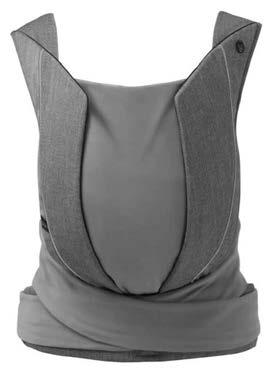RUNNING HEAD
WHAT ARE THE BEST FOODS TO BE EATING AS A NEW MUM?
I WANT TO TRY EXPRESSING MILK. HOW EARLY CAN I DO THIS AND WHAT ADVICE WOULD YOU GIVE TO GET STARTED?
when you need to make sure you’re eating well, it’s during those first few months after your baby is born. Here are my top 10 tips for a healthy diet: • Drink plenty of water – more than usual. Breastfeeding can cause dehydration. • Go easy on the tea and coffee. It can affect baby’s sleep (gulp!) and the caffeine can make you feel even more anxious. • Eat regularly, especially after you’ve had a nap when your blood sugar will naturally dip. Snack on full-fat natural yogurt with seeds, nuts and fruit, or oatcakes with coconut oil. • Try to consume oily fish several times a week, or take a supplement to promote a healthy mind and ensure your breast milk is rich in DHA for baby’s brain development. • It’s easier said than done, but try to resist sugar. It’s tempting when you’re emotional and tired, but it can make your baby gassy and will give you terrible blood-sugar spikes, leading to unsteady emotions. • Eat lots of slow-release carbs such as lentils, chickpeas and beans. A quick lunch idea is a tin of chickpeas, tuna, salad leaves and tomatoes with some olive oil, salt and lemon. • Have eggs for breakfast, or something high in protein or slow-release carbs, such as porridge with full-fat milk. • Eat meat and fish if possible, with lots of vegetables, including dark leafy greens. • Limit your alcohol to a few glasses a week. Wait until you’ve finished breastfeeding for the evening in order to limit the amount of alcohol in your breast milk. • Don’t restrict calories! You’ll lose weight naturally if you eat normally and healthily.”
WHEN CAN I START GETTING BACK INTO EXERCISE, AND WHAT AM I SAFE TO DO? Camilla Lawrence, lead women’s health physio at Six Physio, says: “For the first six to eight weeks, focus on gradually getting back to walking, start small with five- to 10-minute strolls, and slowly increase the distance over a few weeks. Also get going on your pelvic floor exercises; try doing them every time you feed your baby. If you’re struggling with these or any incontinence or prolapse symptoms, be sure to talk to your midwife or visit a women’s health specialist. At around six to 12 weeks, after your six-week check, start working on rebuilding your core strength with a specialised personal trainer or postnatal Pilates or yoga class. You can also start to increase your cardiovascular exercise but still keep it low-impact at this stage (for example, fast walking, swimming, cycling or using the cross trainer). When your baby is three months old, continue building on your core strength and conditioning work, and if you’re pain free with no pelvic floor problems, you can start returning to impact exercise again, such as jogging, aerobics, tennis and netball. I always advise getting a full postnatal body check by a women’s health physio from six weeks post-partum. This should include a detailed assessment of your posture, back, pelvis, pelvic floor and abdominal muscles, identifying any problem areas and how to fix them. They’ll also give you a safe and individualised programme to help get you back to the fitness levels you want.”
SUGAR IS TEMPTING WHEN YOU’RE TIRED – BUT IT CAN MAKE YOUR BABY GASSY 70 | The Ultimate Baby Book 2021
Sioned Hilton, Lactation expert for Medela UK, says: “If breastfeeding is going well, wait until after your baby has her three-week growth spurt, so ideally from four-weeks postnatal. The early weeks are key to getting your breastfeeding established with lots of practise and support to build and maintain milk supply. However, if either of you are experiencing breastfeeding difficulties, expressing might support building your milk supply during this phase. Please seek advice from your midwife, or breastfeeding support group. Mums with babies who need hospitalisation need to express from birth to initiate and build supply in preparation for when baby can breastfeed. As for when to express, there’s no right or wrong time – it’s based upon your baby’s feeding pattern. Have realistic expectations that if you feed baby often, every one to three hours, your supply is fine-tuned to meet their needs and you may not have much milk available for spare. If you’re away from your baby, or your partner is giving a feed, you can express at this time. Remember the night feeds are critical for milk production – so if you’re not feeding while your partner helps out, ensure you pump milk to supply. Choosing the right pump for your demand is important, so make sure you research the options. A double pump is the most time efficient, while research also supports that when you express both breasts simultaneously you get an average of 18 per cent more milk than when you single pump. However, a single pump is an ideal option if you express occasionally when the majority of the feeds with baby are on the breast. Here are some of my expressing tips: • Find a time suitable for you both – early morning, mid-afternoon is a good start • Pump only one breast initially, just in case baby wakes earlier than expected. Once you have more idea of time and patterns you can express both breasts. • Relax and put your feet up. • Pump when baby is feeding from the other breast. • Set a comfortable vacuum and check breast shield size – a shield that’s too big or small can hinder milk flow. • Be realistic about volumes. Ranges vary – a few ounces are amazing if baby feeds often.”
SOURCES: REDCASTLE.FR; THE BABY SHOW; ONS.GOV.UK; TOMMY'S; CHANNEL MUM; BEPANTHEN
Melanie Lawson, founder of Bare Biology, says: “If there’s a time in your life















